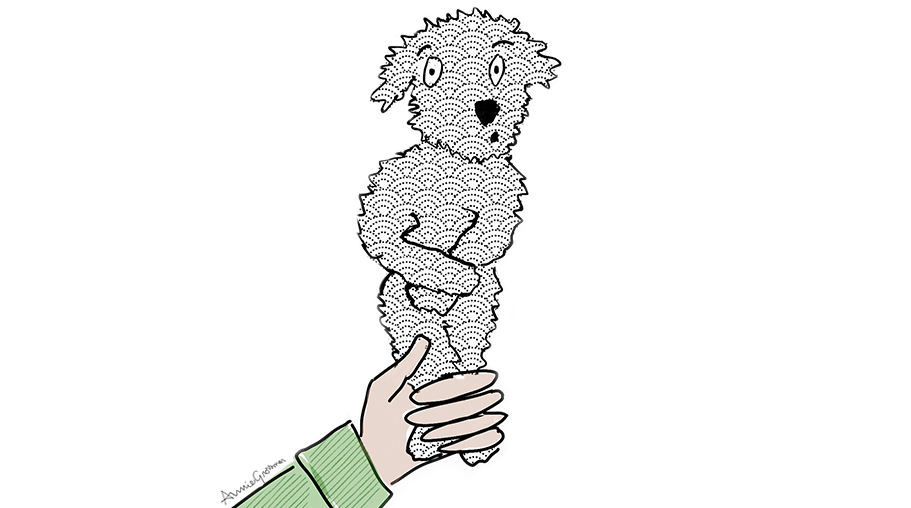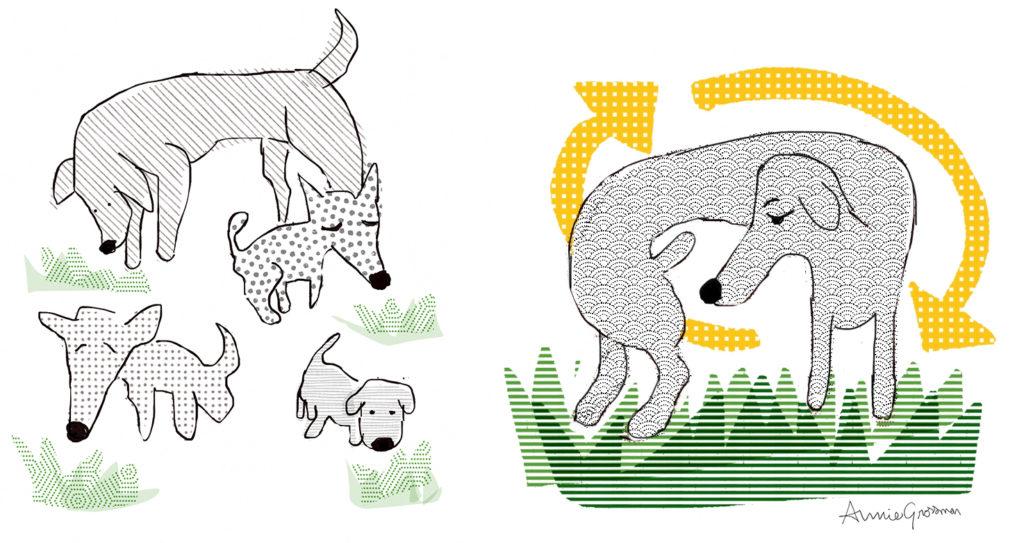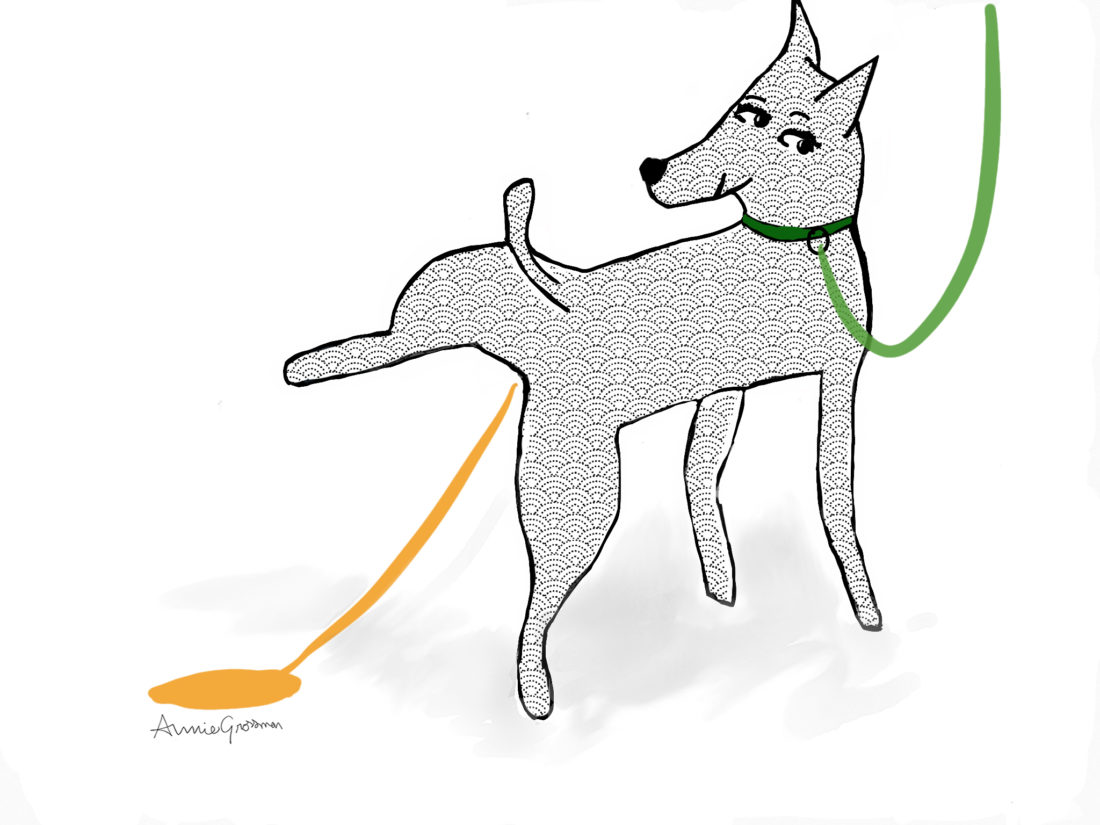
17 Mar10 steps to house training a dog without stress
A modern dog owner's guide to house training
For anyone who has a puppy or new dog in their home, house training is almost always a number one priority. Most of the time, this means teaching a dog to pee and poop outside, and to not do it inside. This can be done painlessly and simply with some smart management tools and a bit of thoughtful attention.
Note: If you want to teach your dog to go inside in a specific area, or in your yard, you can still use the below instructions, just bring your dog to whatever your chosen “go” spot is rather than to the street.
1. Don't allow opportunities for mistakes
When teaching a dog where you want him to pee and poop, it's important that you present lots of opportunities to go in the places you want him to go, and not give let him have any opportunities to go in places where he shouldn't. As we all know, peeing and pooping feels good! This means that it's inherently positively reinforcing, and any behavior that is reinforced is more likely to happen again. So, rather than let your dog have the chance to learn how nice it is to go inside, you'll want to use smart management techniques to make sure all eliminating happens in the right spots. You can do this in any of the following ways:
Tethering
- If your dog is tethered to you, he won't have a chance to wonder off in the other room to pee on the bath mat when you're not looking. He'll also be close enough to you for you to start reading the signs that he has to go.
Crating
- Most dogs don't like to relieve themselves in the same spot where they're hanging out. This is one reason why a crate shouldn't be much larger than your dog. Before you start leaving your dog alone in the crate, keep the crate with you and take it from room to room. If you have a small dog and a small crate, you can even have it on the couch with you, or put it on your desk. You can also build your dog's interest in the crate by feeding him his meals in it. Try and make sure your dog is content being in a crate while you're around before you start leaving him alone in it. Read more about crate training here.
Carrying
- If you have a dog that is small enough to carry, you can control where is spending his time — and make sure he isn't going in the wrong spots — by simply keeping him under your arm, or on your lap, or in a comfy bag.
Penning
- Keeping your dog in a fixed space can be a good way to control where he is going to go. The key is to pen off a spot that is small and that, whenever possible, includes you, so that you can be there to spot the indications that it's time for an outing.
The moment you allow your dog any freedom from crating (or holding or penning or tethering), it's important to bring him to the appropriate “go” spot right away. Tip: If you have a puppy and you're bringing him outside via stairs or an elevator, carry him outside so he doesn't have a mistake on the way out.
2. Learn to spot the signs that a pee or poop is about to happen
Most dogs have a series of things they do before peeing or pooping; by learning to notice these behaviors, you can up your chances of getting your dog to the “go” spot at the perfect moment.
Some dog's signs are more obvious than others. Many dogs will spin a few times before going; some will do a lot of sniffing before going.
Some dogs will spin a few times before they relieve themselves.

Some dogs will sniff a lot right before going. Some will spin a few times.
If you are training a puppy, consider that walks can be overwhelming — especially if you live in a busy city. It's better to let your buddy get used to an urban environment by taking him out for lots of little jaunts throughout the day rather than subjecting him to a few longer ones. Short walks will also produce dogs who are more likely to eliminate speedily. Given the choice between a dog who goes right away when he gets outside or one who has to walk around the block five times before it occurs to him, most people would choose the former! You can make this happen by only taking longer walks if your dog goes right away. If he doesn't go during the first two to five minutes of your outing, go back inside and try again twenty or thirty minutes later, using smart management techniques to make sure there are no mistakes made while you're inside. If your dog is one who seems like he would enjoy a longer walk, then that longer walk can reward the peeing and pooping when it happens. If you have a dog who seems like he'd prefer being inside, then pack it in as soon as he goes!

You might have to experiment to figure out where your dog likes to go, and what your dog likes to go on.
5. Track your progress
Keeping a simple log of when your dog eats and when he relieves himself will help you figure out when to take him out. There are some good apps for logging meals, pees, poops and accidents. One favorite is Puddle and Pile, which will learn your buddy's schedule well enough so that it will start reminding you when you should take him out.

Scolding a dog may inadvertently punish him for the wrong thing.
6. Refrain from scolding
Once your dog starts to go in the wrong place, stick out your hand, palm up, and bang yourself in the forehead. That's about all you can do until he is done. It's ill-advised to do anything that might cause your dog to be fearful, whether that's yelling at him or shoving his face into his mess. This is because there is no way to be sure that your dog is making the right association, and it's not worth the risk that your dog might make the association that going in front of you is the wrong thing to do. This can produce a dog who goes and hides when he needs to relieve himself. A dog could also come the erroneous conclusion that the room he peed on should be avoided at all costs, or that people in boots are bad or… who knows! It's also possible that your dog might misconstrue your excitement as reinforcing attention. And putting his face in his poop might also be futile, since a lot of dogs are into that kind of thing. Also: Don't pick your dog up to try to reposition him once he is going, as this will probably be perceived as punishment, and so there is again the risk of a wrong association being made. I mean, just think how scared you'd be if a large animal from another species lifted you into the air while you were going! This doesn't even happen in horror films!
7. Reward with something great
Eliminating in the right spot is a very important thing, and we should therefore pay our dogs well when they get it right. If you reward with something edible, make sure it is something really extra special (like a tiny bit of bacon or a lick of peanut butter). You can also use verbal praise. Just make sure that you give the special stuff (be it something edible or just your enthusiasm) after your dog goes, not while he is going — you don't want to distract him! Also: If you're going the verbal praise route, get your dog too riled up if you're on the city streets. For safety reasons, it's not wise to let your dog get in the habit of getting wildly excited while on leash.

House training is a major priority for most new dog owners.
8. Erase mistakes as best you can
 If there is a place where your dog has repeatedly made mistakes, your first plan of attack should be figuring out how to keep him from accessing that spot without supervision. While using any of the management techniques outlined above should reduce the likelihood of repeat offenses, you can also sometimes remove the culprit (like lifting up a rug) or block an area that tempts problems. You should also make sure to do the best job you can at getting rid of any reminder that it was ever a good place to go. An enzymatic cleaner should be part of your cleanup routine. At School For The Dogs, our preferred one is Anti-Icky-Poo
If there is a place where your dog has repeatedly made mistakes, your first plan of attack should be figuring out how to keep him from accessing that spot without supervision. While using any of the management techniques outlined above should reduce the likelihood of repeat offenses, you can also sometimes remove the culprit (like lifting up a rug) or block an area that tempts problems. You should also make sure to do the best job you can at getting rid of any reminder that it was ever a good place to go. An enzymatic cleaner should be part of your cleanup routine. At School For The Dogs, our preferred one is Anti-Icky-Poo
9. Take note of environmental cues
I've previously outlined how to put peeing and pooping on cue, but there are cues all around that your dog is learning even if you're not specifically giving any. Everything your dog perceives as he is going, and prior to going — from the surface he is on to what he is seeing and smelling and hearing — is becoming part of his notion of what a “bathroom.” So, if you have the choice, bring him back to that spot, or some place similar, in order to encourage him to go again next time. Human cues for going include seeing a toilet, or seeing the words Men or Women on a door.
10. Think about what your dog is eating
If you're having a hard time house training a dog, consider changing up your dog's diet — especially if your dog is eating dried food or canned food. What goes in affects what comes out. A diet that has fewer processed foods in it will usually be better absorbed by your dog's body and will result in less output waste. Tune into our podcast next week when we will be discussing some of the benefits of feeding your dog a more “whole food”-based diet with Hanna Mandelbaum of Evermore Petfood.
Listen to our episode on house training here:



